John Hurrell – 10 September, 2015
The trouble is that when one considers various artists who excel in transmutation (in the most immediate, literal and physical way) - artists like Simon Starling, Douglas Gordon, Cornelia Parker or Eric Cameron - Hester's project is in comparison somewhat clumsy, longwinded and over-complex, being based on geological history but devoid of signs of transmutation in its own palpable, material offerings.
Auckland
Bianca Hester
movements materialising momentary
Curated by Abby Cunnane
31 July - 11 September 2015
movements materialising momentary is one of those complex exhibitions where what is displayed in the gallery space is really only part of the story, where the sculpture on the floor or walls (some performative residue, some not), and one of the projected films, reference or document a 14 kilometre walk. This was taken by about forty people led by the artist on the 11 July, from Mt John Summit (Te Kopuke) to the Te Tokaroa /Meola Reefway by Waitemata Harbour. Following a route that followed along the contour of a lava flow that resulted from an eruption of 28,500 years ago, three 5.6 metre long bronze rods were conveyed from the eastern to the western site.
This was one of three axes involving movement (across space, across time) that Bianca Hester focussed on. Another looked at the processes of the drilling of the Waterview Tunnel, and the dumping of the extracted core in a quarry at Wiri, while a third exhibited castings taken from fossilised forest sites at Takapuna and Stonefields. The three conceptually intersect at the gallery site.
At first glance, Hester’s installation seems in a New Zealand/Auckland context (she’s from Sydney) to have an Andrew Drummond methodology of bronze instruments (he uses brass) mingled with the geological preoccupations of Finn Ferrier. It reveals a big interest in the volcanic history of Auckland, and how its landscape evolved. In her short essay on this project’s rationale, Abby Cunnane quotes Elizabeth Grosz when discussing transmutation (‘the conversion of two into one, the conversion of the previous thing, plus the energy invested in the previous process of production as a different thing...’(1)) linking these oblique phrases to Hester’s use of exhibited static objects which ‘contain the potential for movement, a sense of movement which defies empirical measurement.’(2) As the show’s title says, ‘movements materialising momentary‘.
The trouble is that when one considers various artists who excel in transmutation (in the most immediate, literal and physical way: also with a continuum of further potential change) - artists like Simon Starling, Douglas Gordon, Cornelia Parker or Eric Cameron - Hester’s project is in comparison somewhat clumsy, longwinded and over-complex, being based on geological history but devoid of signs of transmutation in its own palpable, allegedly ‘un-still‘ material offerings. It is not just a question of different time scales and the immensity of her referential sweep. It is because her use of materials hides or denies her own processes of transformation: powder-coated paint on hoops or patinas on the bronze casts of trees, oxide on plaster casts taken solidified ash, paint on found plywood, and ghostly fade-ins and fade-outs inserted into one of her films. Her practice contradicts the ethos of detectable process that is curatorially claimed for it, because her exploration of transmutation - instead of looking at metamorphosis - is really more about pointing at external historical processes demonstrated beyond the gallery, than devising sculpture that inherently samples or reflects them on the spot.
Having said that about the sculpture and film, some of the photographs documenting these processes (a different status) are very interesting. Two dramatic images in the front window (FrontBox) gallery, show sludgy tailings being deposited at the quarry at Wiri, and - in the gallery - another vertical photograph of a submerged tree in a watercourse, covered with fastmoving, silt-loaded water (AO photographic image), is quite ambiguous spatially. Dark grey in its depiction of a torrent, for such a limited use of tone it is unexpectedly mysterious. Difficult to decipher.
Amongst the added videos is a work made in Warrnambool, showing spinning (and toppling over) steel hoops creating different aural textures on various hard surfaces, and light raking visual textures formed on the curved cast planes of bronze dishes and rings. The recording of the clanging rotating hoops by Polly Stanton is so exceptionally clear it upstages the visuals. The delicate crystalline sound dominates.
The show has an informative and well illustrated website; you can click here and check out its menu. In contrast the gallery presentation disappoints, for the positioning of screens, photographs and sculpture (especially in Gallery One) lacks that sense of inevitability that good spatial layout exudes. But as I said at the start, maybe that lack of design ‘rightness’ is inconsequential, that the 11 July walk (as a social and educational experience) is the heart of Hester’s contribution.
John Hurrell
(1) Elizabeth Grosz, Architecture from the Outside: Essays on Virtual and Real Space, Cambridge: MIT Press, 2001, p.170)
(2) Abby Cunnane, Essay for movements materialising momentarily, St Paul St Gallery, p1.
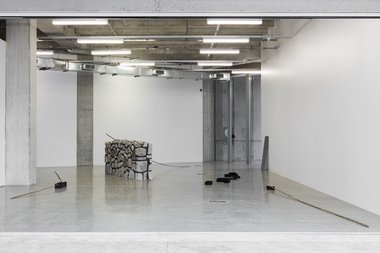
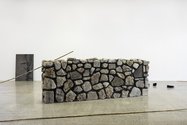
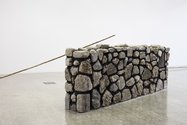
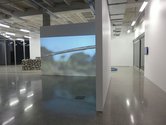
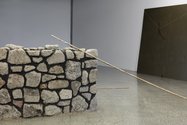
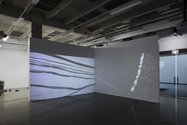
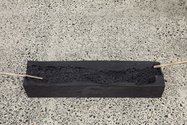
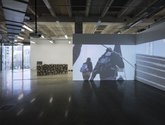
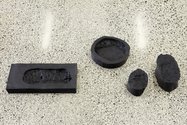


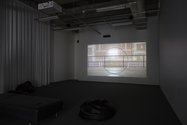
 Advertising in this column
Advertising in this column Two Rooms presents a program of residencies and projects
Two Rooms presents a program of residencies and projects



This Discussion has 0 comments.
Comment
Participate
Register to Participate.
Sign in
Sign in to an existing account.